It is estimated that over 400,000 Australians are currently living with a form of dementia, of which 75% live at home.
Caring for someone with dementia at home can be a rewarding experience, yet it is also a great responsibility. Whether you’ve become a carer by choice or necessity, you’ll no doubt have good days and challenging days as you navigate caring for someone else.
Supporting someone with dementia to stay independent at home has benefits for both the person doing the caring (by not having to do everything for the other person) and the person being cared for (they experience independence, autonomy and purpose).
The home environment itself can play a large role in enabling a person with dementia to stay independent, and fortunately, there are some small changes that can be made to support self-sufficiency.
At Brightwater, our Younger Onset Dementia SIL House in Kingsley has adopted many of the evidence-based National Aged Care Design Principles and Guidelines to create ‘dementia enabling environments.’
In the following list, we’ll share nine of the simplest changes that can be made at home to make life a little easier for everyone.
1. Wayfinding signage and door labelling:
Wayfinding signage helps someone with dementia to move independently from one place to another. For example, labelling the toilet door and kitchen cupboards makes it clear what is behind each door (or even better, leave mugs and plates out on an open shelf). Keep the signs simple and at eye level where possible. Choose a matte finish instead of gloss, make the sign a different colour to the door, and use large and simple fonts with no serifs (serifs are those small lines or strokes attached to the end of letters in some fonts).
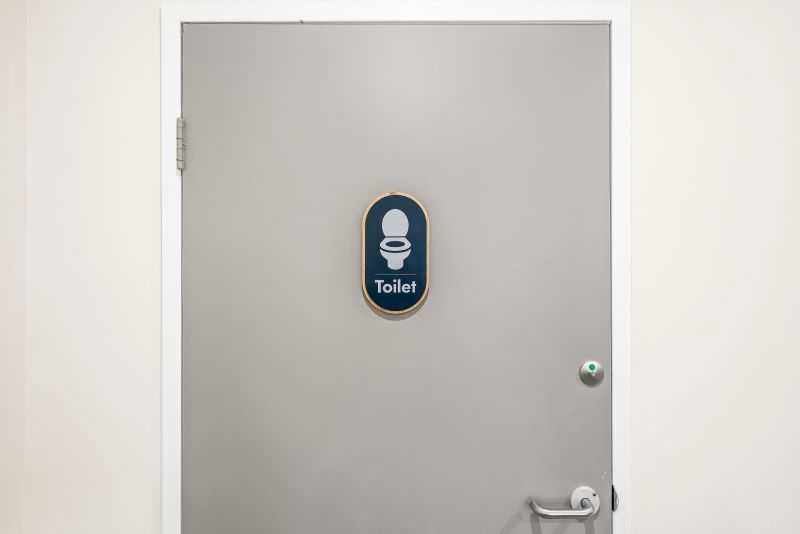
A labelled toilet door at Brightwater’s Younger Onset Dementia home in Kingsley. Note the colour contrast and large simple font.
2. Ensure you can see outside from inside the home:
Enabling a person living with dementia to see the front and back garden areas from within the home helps them to ‘place themselves’ on the property. For example, if they are sitting in a front lounge room, keep the curtains open so they can see the front garden and the letterbox. Simply being able to see the letterbox can prompt the person to go and check for mail, keeping them participating in regular life.
If your back door is not transparent, consider labelling the door with ‘Backyard’ and aim to keep curtains open on rear-facing windows. Store a broom by the back door (instead of in the shed) to prompt the person to go out the back and sweep.
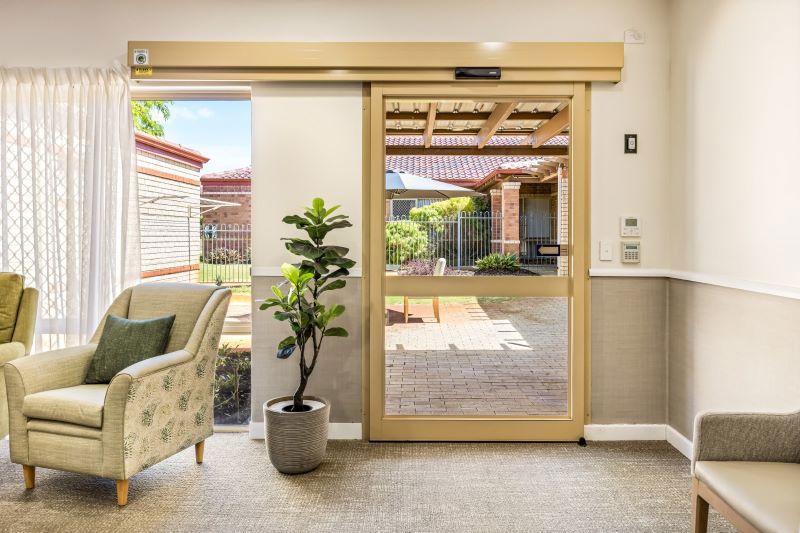
A glass back door keeps the garden area in view at Brightwater’s Younger Onset Dementia home in Kingsley.
3. Display what’s important (and put away what’s not):
Surroundings that are visually ‘busy’ can contribute to the confusion felt by someone living with dementia. A decluttered, simplified environment makes decision-making easier, supporting independence. Steps you can take include reducing the amount of clothing in the person’s wardrobe or leaving regular use items (like tea and coffee) out on display on the kitchen bench, rather than behind a cupboard door.
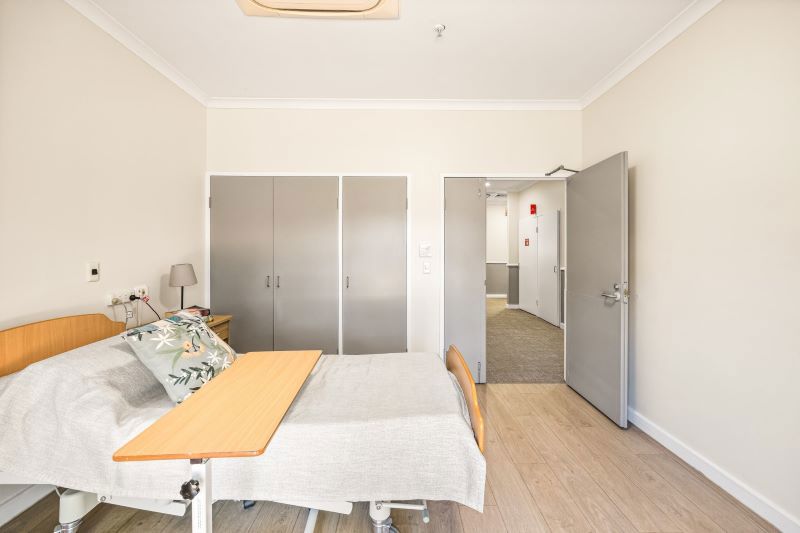
A decluttered, simple environment helps to reduce confusion for someone living with dementia.
4. Contrast colours where possible (except on the floor):
Dementia can affect colour perception and rooms where everything is the same colour (such as all-white bathrooms) can be difficult to navigate. If you have a white toilet against a white wall, replace the toilet seat with another colour (such as blue) so it stands out. And if your dining table is a light colour, opt for dark-coloured plates like charcoal grey.
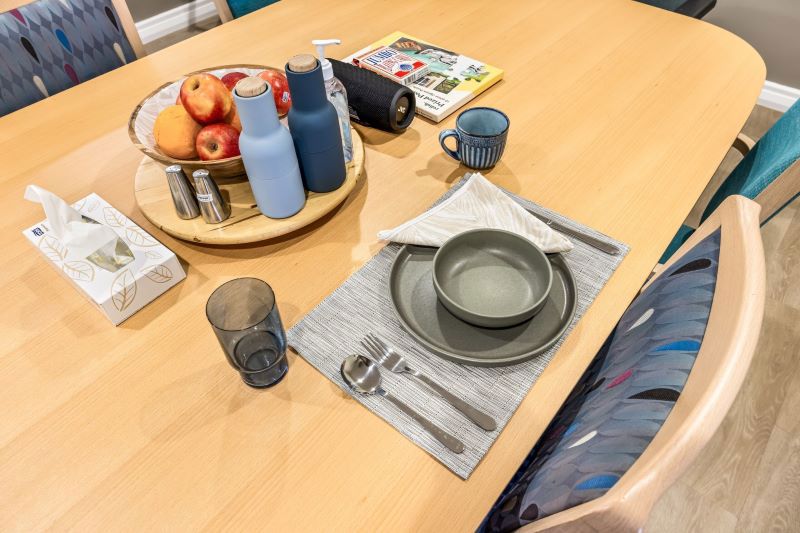
Charcoal plates against a light-coloured table create a helpful visual contrast for someone living with dementia.
5. Keep flooring consistent in colour:
People living with dementia can have difficulty interpreting their environment. When flooring changes from a light colour to a dark colour, such as white tiling transitioning to grey carpet, it can be perceived as a change in depth. As a result, someone with dementia may believe the grey carpet is a hole and try to go around it. Keep floorboards and carpets in similar tones where possible and remove any mats that aren’t consistent with the floor colouring.
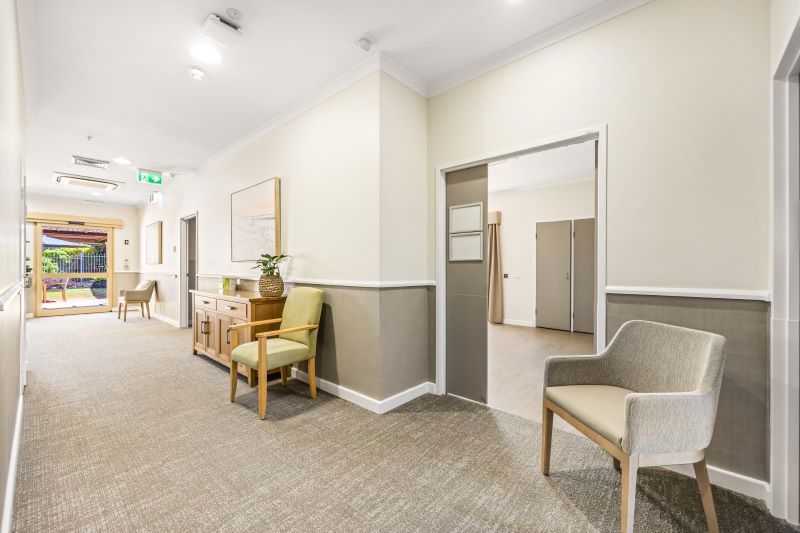
Choose carpeting and floorboards that are a similar tone.
6. Induction cooktop:
Helping someone with dementia stay involved in meal preparation can maintain their skills and stimulate their appetite. Gas and electric cooktops aren’t ideal as there is a risk of the person leaving the gas on or touching a scorching hot plate. Induction cooktops are a safer choice as they stay cooler and some models have automatic shut-off.
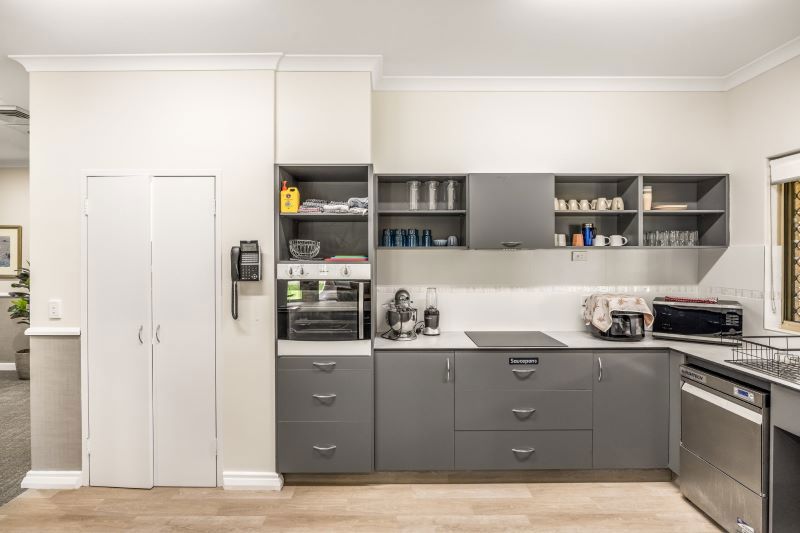
An induction cooktop is a safer choice for someone living with dementia.
7. Consider what’s on your walls:
The right artwork can help someone with dementia to feel calmer. Choose relaxing, familiar artworks such as a nature scene instead of an abstract painting. Photographs are also a great choice to display around the whole house. It can be helpful to label who is in the photos as a memory prompt. When displaying photos or artwork, don’t put them behind glass as the reflection and glare can be confusing for someone with dementia.

A calming nature scene chosen specifically for Brightwater’s Younger Onset Dementia home in Kingsley.
8. Avoid patterned furnishings:
Patterns are perceived differently by someone living with dementia, as they may no longer be able to interpret that what they are looking at is a picture and not real. For example, a couch or blanket covered in flowers and leaves could be perceived as spiders crawling, while a wavy pattern may be misinterpreted as snakes. Opt for neutral, plain furnishings where possible.
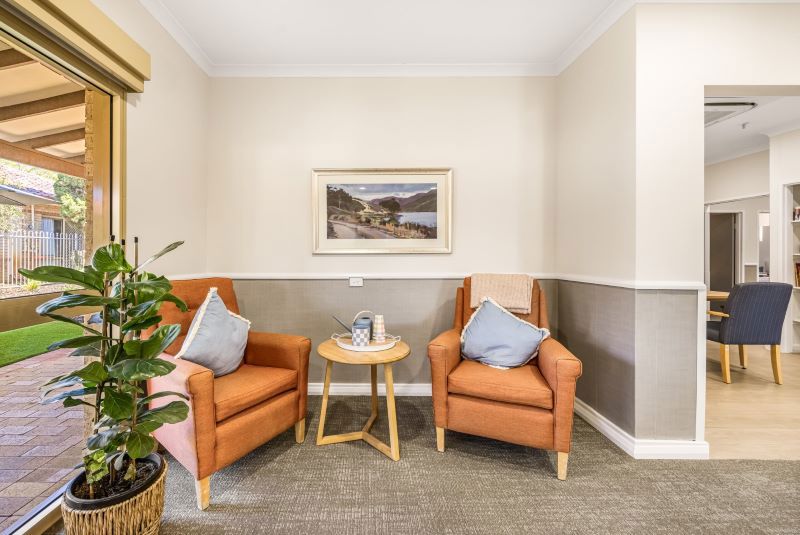
Choose plain furnishings that are free from patterns or waves.
9. Alter the environment to encourage visitation:
It is important for someone with dementia to be visited by friends and family, and small changes to the environment can make a visit more comfortable and enjoyable for everyone. Leave out a photo album or book for visitors and the person they are visiting to look through together. This can prompt memory and guide conversation. If care staff visit the home, encourage them to wear name tags. You can also create an ‘All About Me’ sunflower chart for staff to learn more about the person they are supporting and how best to enable them. The chart can include features such as ‘How you can help me’ and ‘What I like to talk about.’
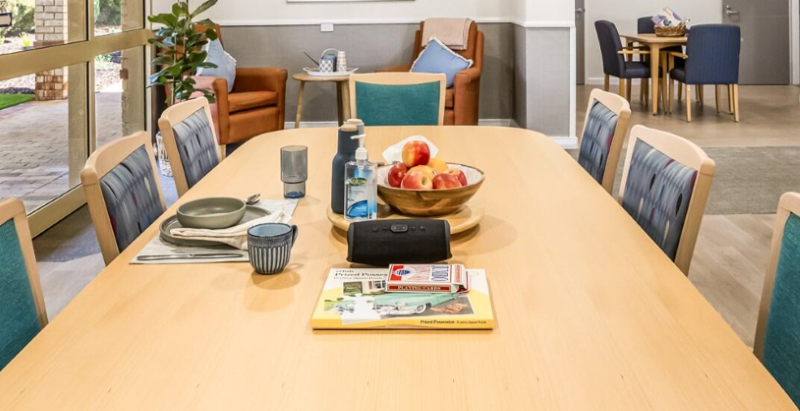
Books, activities and games on a table help facilitate engagement for people visiting a loved one with dementia.
Find out more about optimising your home to better enable someone living with dementia
There are many wonderful resources online that can help guide you in adapting your home to better enable someone living with dementia. A good place to start can be Alzheimers WA Dementia Enabling Environments.
At Brightwater, we care for many people at home who need some extra help, including those living with dementia. If you require support looking after someone living with dementia, contact our home care team to find out how we can help with everything from cleaning and personal care to occupational therapy, speech therapy and physio.



